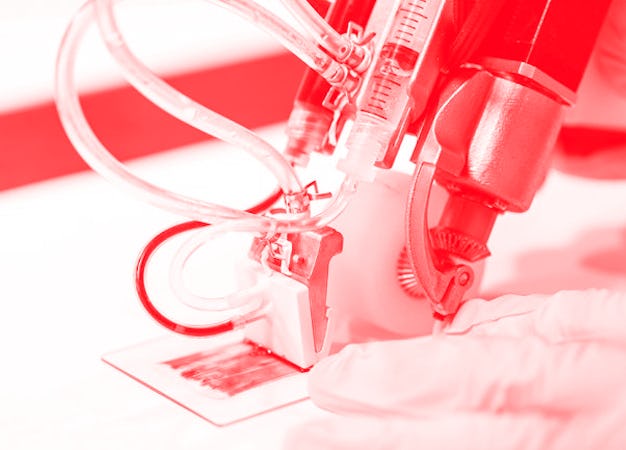Tech
This handheld 3D printer may revolutionize treatment of skin burns

180K
The number of deaths caused by burns in 2018.
Researchers from the University of Toronto and Sunnybrook Health Sciences Centre have developed a new handheld 3D printer that creates sheets of skin for healing burn wounds. Burns can cause devastating deformities and even be fatal. According to the World Health Organization, some 180,000 deaths in 2018 were caused by burns.
The most common method of addressing burns today is skin grafting, wherein healthy skin is taken from other parts of the body and transplanted onto the wound. But when burns are large and go deep into the skin, there may just not be enough healthy skin to take from elsewhere. Burns can be fatal because they weaken the immune system and open up the skin to infections that can enter the bloodstream.
3D printing that’s actually useful? — The new 3D printer uses a roller to dispense a sheet of “bioink” over the burn area. This bioink is composed of mesenchymal stroma cells, or stem cells that specialize themselves depending on their environment. On a person’s skin, the researchers say the bioink promotes skin regeneration and reduces scarring. The team has already collected evidence showing that the deposited bioskin can actually heal burn wounds.
The printer also gives surgeons full control over the dimensions and composition of the skin sheet, meaning they can easily print the new cells to precisely cover the affected area. Previous 3D bioprinters were bulky and incompatible with medical applications, the researchers say. This new version includes a single-use printhead to ensure sterilization, and a soft wheel to help keep the printer steady as it moves along the skin.
“Once it’s used in an operating room, I think this printer will be a game changer in saving lives,” said Dr. Marc Jeschke, a researcher on the team. “With a device like this, it could change the entirety of how we practice burn and trauma care.”
Crucially, the researchers say that the vast majority of burn deaths occur in low-and-middle-income countries where existing methods can be cost prohibitive, if available at all. If this new device can help save lives at an accessible price, it might change skeptics minds on 3D printing.